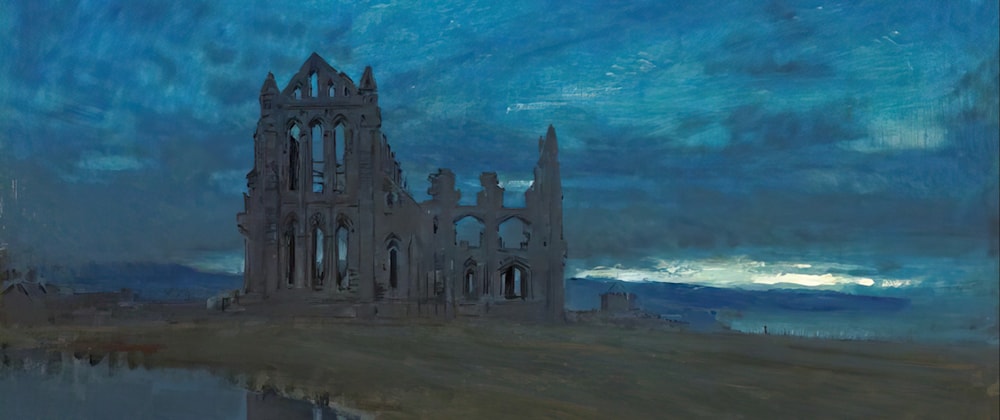Albert Goodwin
Albert Goodwin
27 artworks
Born 1845 - Died 1932

{"Id":3154,"Name":"Albert Goodwin","Biography":"Albert Goodwin was born in Maidstone, England in 1845, just three years before the Pre-Raphaelite Brotherhood was founded, and two years after the publication of Ruskin\u0026rsquo;s first volume of Modern Painters. These dates are significant because it was in the artistic circles generated by Ruskin and the Pre-Raphaelites that Goodwin developed as an artist \u0026ndash; first in the studio of Arthur Hughes, then under the supervision of F M Brown, and finally as a prot\u0026eacute;g\u0026eacute; of Ruskin. Although the Pre-Raphaelites were not primarily landscape painters, their views on \u0026lsquo;truth to nature\u0026rsquo;, and their practice of working directly from nature for the landscape settings of their pictures, inevitably influenced most contemporary landscape painters in the 1850s and 1860s; and in his Notes on Prout and Hunt, Ruskin quite rightly described Goodwin\u0026rsquo;s work as having been \u0026lsquo;founded first on strong Pre-Raphaelite veracities\u0026hellip;\u0026rsquo;. Goodwin was, in fact, extremely fortunate in being taught by Brown, who is by far the most original and interesting of the landscape painters associated with the Pre-Raphaelite circle; however, despite Brown\u0026rsquo;s devotion to the concept of truth to nature, and working sur le motif, his landscapes are, in the final analysis, strangely artificial \u0026ndash; reminiscent of the magical realism of Palmer\u0026rsquo;s Shoreham period rather than the naturalism of Constable, Cox or De Wint. Similarly, Goodwin\u0026rsquo;s landscapes are invariably infused with a poetic charm that raises them above mere description; indeed, one critic complimented him for having that \u0026lsquo;peculiar faculty of painting a natural scene with an undercurrent of supernatural feeling\u0026rsquo;. \u003Cbr\u003E \u003Cbr\u003ELike Turner, Goodwin was a master of all the techniques used in water-colour painting, employing at various times (and not infrequently all together) watercolour, bodycolour, pen and ink, chalk, pastel and gum, on white or tinted papers, with the whole sometimes neatly enclosed in a beautifully designed, hand-painted border. In order to achieve the subtle lighting effects associated with dawn and sunset \u0026ndash; his favourite times of the day \u0026ndash; he wiped and scraped and \u0026lsquo;\u0026hellip;hammered at them with the blade of a safety-razor, a knife, sandpaper, sponge, rag, and a fitch brush!!! So many are the expedients that the despairing water-colour painter in the last has to resort to\u0026rsquo;. \u003Cbr\u003E\u003Cbr\u003EBy Hammond Smith Author and Biographer of Albert Goodwin, Leigh-on-Sea: F Lewis, 1977\u003Cbr\u003E\u003Cbr\u003ECompliments of Chris Beetles - \u003Ca href=\u0022http://www.chrisbeetles.com/\u0022 target=\u0022_blank\u0022\u003Ewww.chrisbeetles.com\u003C/a\u003E\u003Cbr\u003E\u003Cbr\u003E\u003Cb\u003EArticles on Albert Goodwin Compiled by Chris Beetles:\u003C/b\u003E\u003Cbr\u003E\u003Cbr\u003E\u003Cb\u003E\u003Ca href=\u0022http://www.artrenewal.org/articles/2008/Goodwin/goodwin2.asp\u0022\u003EHis Life and Work\u003C/a\u003E\u003C/b\u003E\u003Cbr\u003Eby Hammond Smith\u003Cbr\u003E\u003Cbr\u003E\u003Ca href=\u0022http://www.artrenewal.org/articles/2008/Goodwin/goodwin3.asp\u0022\u003E\u003Cb\u003EBogie and the Professor\u003C/a\u003E\u003C/b\u003E\u003Cbr\u003Eby David Wooton\u003Cbr\u003E\u003Cbr\u003E\u003Cb\u003E\u003Ca href=\u0022http://www.artrenewal.org/articles/2008/Goodwin/goodwin4.asp\u0022\u003EA Sketchbook of 1872\u003C/a\u003E\u003C/b\u003E\u003Cbr\u003Eby David Wooton\u003Cbr\u003E\u003Cbr\u003E\u003Cb\u003E\u003Ca href=\u0022http://www.artrenewal.org/articles/2008/Goodwin/goodwin5.asp\u0022\u003EWhy Albert Goodwin Matters\u003C/a\u003E\u003C/b\u003E\u003Cbr\u003Eby Godfrey Barker\u003Cp\u003E","BiographicalImageUrl":null,"StartYear":1845,"EndYear":1932,"Awards":null,"HasAlbums":false,"HasPortraits":true,"HasRelationships":false,"HasArticles":true,"HasDepictedPlaces":true,"HasLetters":false,"HasLibraryItems":false,"HasProducts":false,"HasSignatures":false,"HasVideos":false,"HasMapLocations":true,"TotalArtworks":27}


